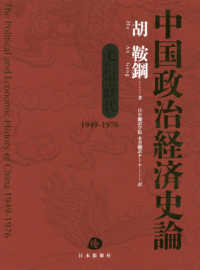- ホーム
- > 洋書
- > 英文書
- > Science / Mathematics
Full Description
Cell mechanics and cellular engineering may be defined as the application of principles and methods of engineering and life sciences toward fundamental understanding of structure-function relationships in normal and pathological cells and the development of biological substitutes to restore cellular functions.







